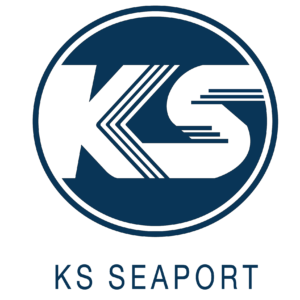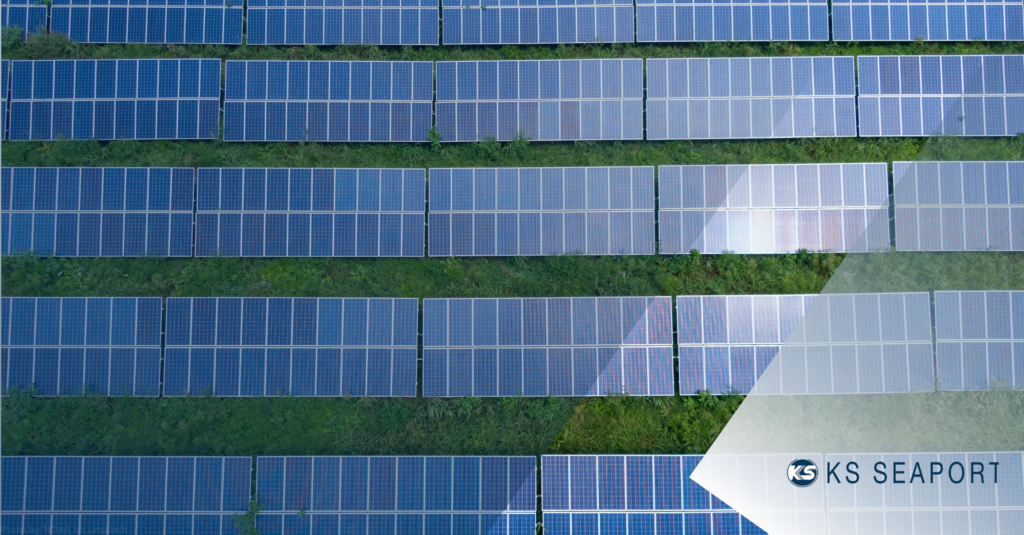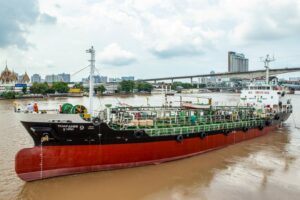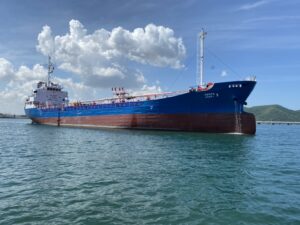The tanker carrier business is the lifeblood of the global oil industry, ensuring the efficient and safe delivery of resources pivotal to our contemporary society. With the evolving landscape of global energy needs, the maritime realm, especially the tanker sector, is undergoing swift transformations. Pioneering these changes isn’t just crucial; it’s indispensable.
Trend 1 : Sustainability and Eco-Friendly Practices
The tanker carrier business is acutely aware of the climate challenges ahead. As a response, many in the industry are reorienting their strategies to not only mitigate their environmental impact but also to harness new opportunities in the evolving energy landscape.
For instance, the traditional operating models are being redefined. Amid stringent carbon-reduction targets, oil and gas companies face uncertainties, yet they are exploring avenues such as offshore generation, electric-vehicle (EV) charging, and hydrogen production. These initiatives aim to strike a balance between fulfilling energy needs and reducing carbon footprints.

Photo by Burak Başgöze
Furthermore, while fossil fuels will continue to play a role in the global energy mix, with McKinsey’s Global Energy Perspective 2022 suggesting their significant presence even by 2050, the approach to their use is changing. The industry is looking at these resources in the broader context of an energy transition, focusing on affordability and security of supply.
Oil and gas companies have an edge in this transition. Their global outreach, robust balance sheets, and deep-rooted relationships in the energy sector position them to be key players. As they pivot, a multi-pronged strategy is evident: the development of customer-centric business models, advanced energy management practices, diversification of energy portfolios, and a renewed focus on capital and project excellence.
The transition towards renewable power is not just about reducing carbon footprints. For the tanker business, it’s about reshaping operations to align with a sustainable future while leveraging their inherent strengths. With the push for cleaner waters, the industry is also adopting ballast water treatment systems and innovating in ship design. The goal is clear: to navigate the waters of change efficiently while upholding the mantle of environmental responsibility.
Trend 2 : Digital Transformation and Automation
The dynamics of the oil market, with its historical price fluctuations and geopolitical influences, call for a transformative approach to operations. Amidst this volatile backdrop, oil and gas companies are looking to digital solutions as a beacon. Their goal? Transform operations to improve asset reliability and availability, all while cutting costs and reducing carbon emissions. This is not just about short-term gains; it’s about ensuring long-term sustainability in an ever-evolving marketplace.
Many industry leaders recognize digitization as the linchpin for these advancements. Over the last decade, the power of data analytics, Artificial Intelligence (AI), and the Industrial Internet of Things (IIoT) has been harnessed to optimize intricate processes, pinpoint inefficiencies, and swiftly respond to market shocks and disruptions. These tools, born from the Fourth Industrial Revolution, are not just trends but essential assets in the modern maritime world.

Photo by Sergii
But the horizon of innovation doesn’t end here. The industry is buzzing with the potential of rapidly maturing technologies. From enterprise cloud computing, which offers scalable solutions and real-time data access, to the immersive training potentials of virtual and augmented reality, the toolbox for tanker businesses is expanding. Drones are revolutionizing inspection processes, ensuring safety and accuracy, while blockchain promises secure and transparent data exchanges, fostering trust in a complex ecosystem.
However, the road to full-scale digital transformation is laden with challenges. McKinsey’s research sheds light on a crucial aspect: while many companies are diving deep into digitization, a significant 70% find themselves unable to achieve the desired transformative outcomes. This underscores the need for not just adopting technologies but integrating them effectively into the very fabric of operations.
In essence, the digital wave in the maritime industry isn’t just about tools and technologies. It’s about envisioning a future where these innovations drive efficiency, safety, and sustainability, ensuring that the voyage ahead is both prosperous and responsible.
Trend 3 : Advanced Safety Protocols and Training
In the vast, unpredictable expanses of the ocean, safety isn’t just a priority—it’s a mandate. Modern technology has brought forth a wave of innovations, and with IoT devices and sensors, tanker operations can promptly detect and address onboard incidents. However, the true potential of any technology is unlocked only when used adeptly.
In this context, training becomes crucial. But the road to advanced safety protocols isn’t without challenges. Many oil and gas companies initiate digital transformation projects, only to find them stalling at the pilot phase. The barriers aren’t just technological. Often, the hurdles are organizational and cultural. There’s a palpable need to demonstrate the tangible value of these innovations, not just in terms of operational efficiency but also in enhancing safety standards.

Moreover, the introduction of new technologies requires a workforce that’s skilled and adaptive. Long-standing practices need to be revisited, and employees must be equipped with the skills to navigate the digital landscape. This means more than just training; it requires creating the right incentive structures and support mechanisms.
Integration, too, is key. Isolated digital projects might show promise in their initial stages, but for holistic safety enhancements, these initiatives need to be seamlessly integrated into the broader operational framework. This includes aligning with the company’s IT and operational technology (OT) infrastructure, ensuring that safety protocols are robust, consistent, and adaptive.
In conclusion, as the tanker business sails into the future, it’s evident that advanced safety protocols will be shaped not just by technology but by a concerted effort to integrate, train, and adapt. Only then can the industry ensure that both crew and cargo remain shielded from the unpredictable challenges of the maritime world.
Trend 4 : Regulatory and Compliance Evolution
The maritime world has its fair share of regulations. With growing environmental concerns and emphasis on safety standards, new international and regional regulations have been put in place. Keeping up can be daunting, but with advanced documentation and monitoring systems, timely compliance is more manageable, reducing the looming risk of penalties. Interestingly, blockchain technology has found its way into this realm. Its transparent and immutable nature ensures every stakeholder can verify compliance in the oil transportation sector, fostering trust.
Trend 5 : Diversification and Flexibility in Service Offerings
The tanker business, while rooted in oil transportation, is witnessing a sea change in its operational horizon. This evolution is influenced by the global pivot towards sustainability and cleaner energy sources. As the world moves away from fossil-based electricity and heat, there’s a burgeoning emphasis on renewable energy and hydrogen power. This shift isn’t just about environmental responsibility; it’s about balancing the demand for affordable energy during this transition phase.
The electrification wave is set to permeate various sectors, from industry and transportation to construction. In tandem with this, sustainable fuels and hydrogen are poised to revolutionize industrial processes and transport mechanisms.
Historically, oil companies have dabbled in cleaner energy alternatives. International Oil Companies (IOCs) and National Oil Companies (NOCs) ventured into cleaner energies decades ago. Pioneers in the industry championed solar-component manufacturing and wind project development as early as the 1980s. Today, the narrative has expanded, with companies delving into renewables, power retail, distributed generation, and even EV charging infrastructures.
Looking ahead, the commitment to sustainability seems unwavering. Leading NOCs have outlined ambitious goals, targeting net-zero emissions by 2050. Moreover, significant investments are being channeled into renewable energy. Initiatives range from billion-dollar commitments to building renewable energy businesses to launching specialized funds dedicated to energy efficiency and renewable energy solutions.
In conclusion, the tanker business is no longer confined to its traditional purview. It’s evolving, diversifying, and aligning with global energy trends. With flexible service offerings, value-added services, and a commitment to sustainability, the industry is gearing up to meet the demands of the future, ensuring its relevance and contribution in a rapidly changing energy landscape.
Conclusion
While rooted in tradition, the tanker carrier business exemplifies adaptability in the face of contemporary challenges. As we chart the waters into the future, it’s clear that those in the tanker business who embrace and spearhead these emerging trends will not just persist but flourish. KS Seaport, with its strategic positioning and avant-garde infrastructure, epitomizes this evolution, offering cutting-edge facilities and solidifying its importance in the maritime world. By juxtaposing innovation with safety, economic viability, and environmental ethics, entities aligned with ports like KS Seaport are poised to deliver unmatched value to the oil industry titans, ensuring the world remains powered.












